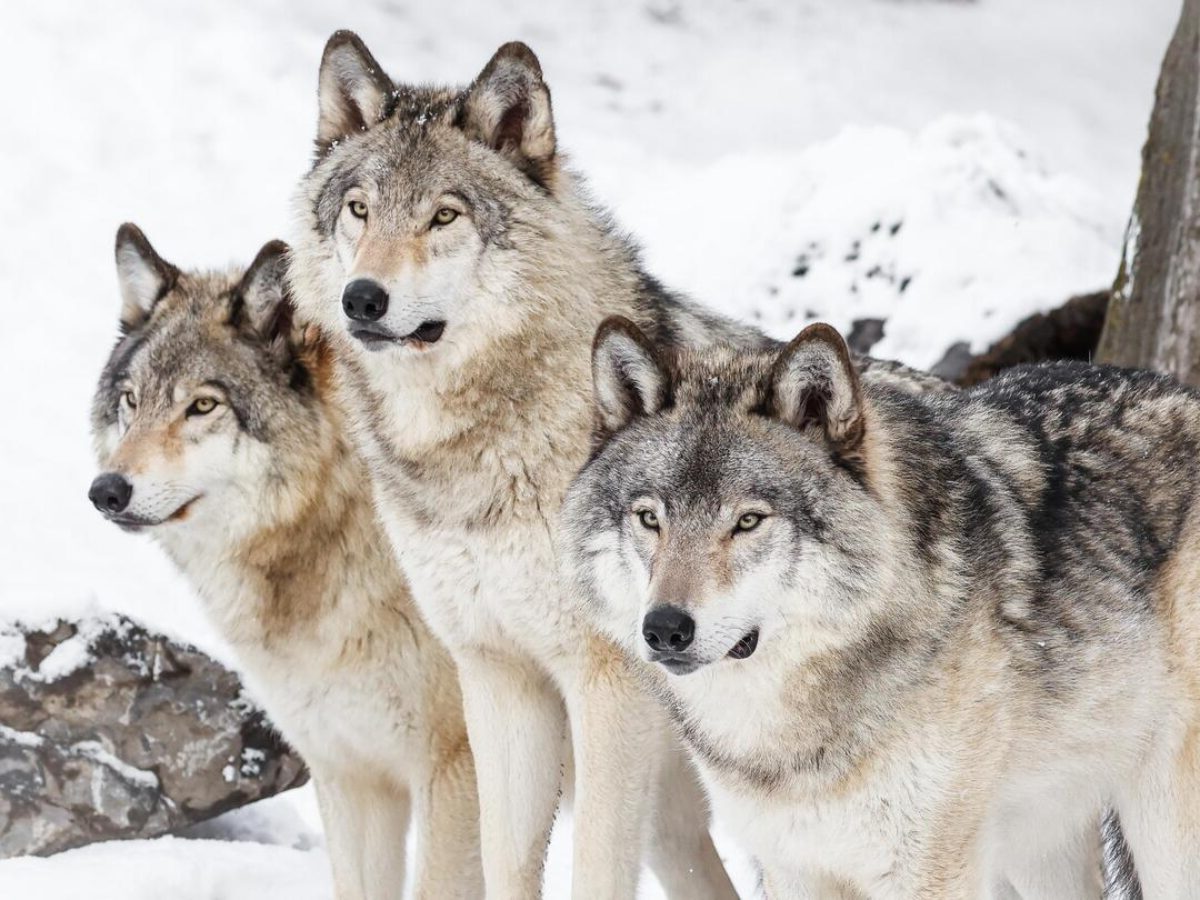
Ever wondered why wolves howl at the moon or how they're so darn good at sticking together as a pack? Well, you're in for a treat! Today, we're diving into the wild world of wolves, uncovering 20 facts that'll have you howling with excitement. From their mysterious social structures to their incredible adaptability, wolves are more than just the stuff of legends and fairy tales. They're complex creatures with behaviors and traits that fascinate scientists and animal lovers alike. So, buckle up and prepare to be amazed by these majestic animals. Wolves aren't just fascinating; they're a testament to the wild's untamed beauty and the intricate balance of nature. Ready to unleash the secrets of these enigmatic creatures? Let's get started!
Key Takeaways:
- Wolves are social and communicate through vocalizations, body language, and scent marking. They play a vital role in maintaining the balance of ecosystems by preying on weak or sick individuals, keeping prey populations healthy.
- The concept of "alpha wolf" is misunderstood, and wolves operate more like families. Conservation efforts are underway to protect and coexist with wolves, dispelling myths and finding innovative solutions for human-wildlife conflicts.
Understanding Wolves: Social Creatures of the Wild
Wolves, often shrouded in mystery and folklore, are fascinating creatures that roam the vast wilderness. These animals are not just solitary predators; they are highly social and complex beings that live within structured family units known as packs.
-
Wolves communicate through an array of vocalizations, body language, and scent marking. This communication is vital for maintaining pack dynamics and territory.
-
A typical wolf pack consists of the alpha male and female, their offspring, and occasionally a few unrelated members. This structure helps in hunting, raising pups, and defending territory.
The Alpha Myth and Pack Dynamics
The concept of the "alpha wolf" is widely known but often misunderstood. Recent studies have shown that wolf packs operate more like families rather than a strict hierarchy dominated by an alpha.
-
The terms "alpha" and "beta" wolves stem from early research that observed captive wolves. In the wild, pack leadership is more nuanced, with the breeding pair (often referred to as the alpha pair) acting as leaders.
-
Leadership roles within a pack are fluid and can change, with different wolves stepping up as the situation demands, especially during hunting.
Wolves' Role in the Ecosystem
Wolves play a crucial role in maintaining the health and balance of ecosystems. Their presence can influence the population and behavior of other animals, leading to a cascade of ecological effects.
-
By preying on the most accessible targets, wolves often select weak or sick individuals, which helps keep prey populations healthy.
-
The reintroduction of wolves to Yellowstone National Park in the 1990s led to a series of ecological changes known as a trophic cascade. This included the recovery of vegetation and changes in the behavior of other species, demonstrating wolves' vital role in their ecosystem.
Wolves and Humans: A Complex Relationship
The relationship between wolves and humans has been complex and often contentious. While wolves rarely pose a direct threat to human safety, they can conflict with people, particularly in areas where their habitats overlap with livestock grazing.
-
Historical efforts to eradicate wolves in various parts of the world have led to significant declines in their populations. Conservation efforts are now underway to help recover these numbers.
-
Wolves have a significant place in human culture, featuring prominently in myths, legends, and folklore across many societies. They symbolize strength, freedom, and the wild itself.
The Diversity of Wolf Species
Wolves are not a one-size-fits-all; there are several species and subspecies, each adapted to its environment.
-
The gray wolf, or Canis lupus, is the most common species, inhabiting parts of North America, Eurasia, and the Middle East.
-
The red wolf, or Canis rufus, is one of the world's most endangered canids, with efforts ongoing to save this species from extinction.
Wolves' Hunting Strategies and Diet
Wolves are apex predators, known for their intelligence and cooperative hunting strategies that allow them to take down prey much larger than themselves.
-
Wolves primarily hunt large ungulates (hoofed mammals) such as deer, elk, and moose, but their diet can be quite varied and includes smaller mammals, birds, and even fish.
-
Pack hunting involves complex strategies that rely on coordination, timing, and the ability to communicate silently through body language.
Wolves in Popular Culture
Wolves have captivated the human imagination for centuries, appearing as symbols of fear, wisdom, and power in various cultural narratives.
-
In many Native American cultures, wolves are revered as spiritual guides and symbols of loyalty and intelligence.
-
Wolves also feature prominently in European fairy tales, often portrayed as villains, which has contributed to their misunderstood reputation.
The Future of Wolves: Conservation and Coexistence
Efforts to conserve wolf populations and promote coexistence with humans are ongoing, with some success stories and many challenges ahead.
-
Reintroduction and protection programs have helped increase wolf populations in parts of their historical range, but habitat loss and human-wildlife conflict remain significant threats.
-
Education and outreach programs aim to dispel myths about wolves and foster a better understanding of their role in nature and the need for their conservation.
-
Innovative solutions like livestock guardian dogs and non-lethal deterrents are being used to minimize conflicts between wolves and farmers.
-
International cooperation is crucial for the conservation of migratory wolf populations that cross national borders.
-
With continued efforts, it's possible to find a balance that allows wolves to thrive in the wild while minimizing conflicts with human activities.
-
Ultimately, the fate of wolves depends on our ability to appreciate their ecological importance and work towards solutions that benefit both wolves and humans.
A Final Howl: Embracing Wolf Wonders
Wolves, these majestic creatures of the wild, have fascinated us for centuries. From their complex social structures to their pivotal role in ecosystems, every fact about them adds another layer to our understanding and appreciation. Whether it's their unique howls that communicate across vast distances or their surprising dietary habits, wolves continue to captivate and intrigue. By learning about them, we not only deepen our knowledge of the natural world but also recognize the importance of conservation efforts to ensure these remarkable animals thrive for generations to come. So, next time you hear a wolf's howl, remember it's not just a call of the wild—it's a reminder of the intricate web of life that connects us all.
Frequently Asked Questions
Was this page helpful?
Our commitment to delivering trustworthy and engaging content is at the heart of what we do. Each fact on our site is contributed by real users like you, bringing a wealth of diverse insights and information. To ensure the highest standards of accuracy and reliability, our dedicated editors meticulously review each submission. This process guarantees that the facts we share are not only fascinating but also credible. Trust in our commitment to quality and authenticity as you explore and learn with us.


